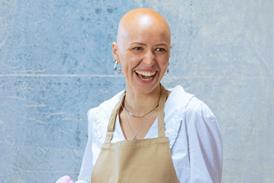- Hot topics
- Join Now!
Designing gardens with God

Award-winning garden designer Grace Rogers shares her top tips for planting in June
“I fell in love with the clean lines, the classical geometry and the way lush flowerbeds created vibrant pools of colour and energy in a formal landscape. The sheer depth of the beautiful pinks and purples of the peonies. I was blown away,” Grace says, describing a turning point moment at the Chelsea Flower Show in 2009.
Grace, aged 23 at the time, stood looking at a show garden by Italian garden designer Luciano Giubbilei, entranced by the possibilities of garden design to express, evoke and transform. Here in front of her was a manifestation of her combined passions and skills; architecture meeting her love of flowers and the natural world. “But I never even knew this field of work existed! And had certainly never considered how perfectly it suited me.” From there on, she was hooked; a new commitment sprung up to pursue garden design that would take her on to win awards and set up her own successful business.
To continue reading, register today for more access!
If you are a member or a registered user, or if you already have a login for another Premier website SIGN IN HERE

Sign up for your free account now!
Registering is quick and easy and gives you immediate access to read more articles, plus:
- You’ll receive a weekly newsletter every Saturday with the top stories of the week
- You can save articles to read later
- You can share your comments and thoughts on the stories
Or become a member today for unlimited access! Special offers are available!
If you already have an account with a Premier website SIGN IN HERE


























